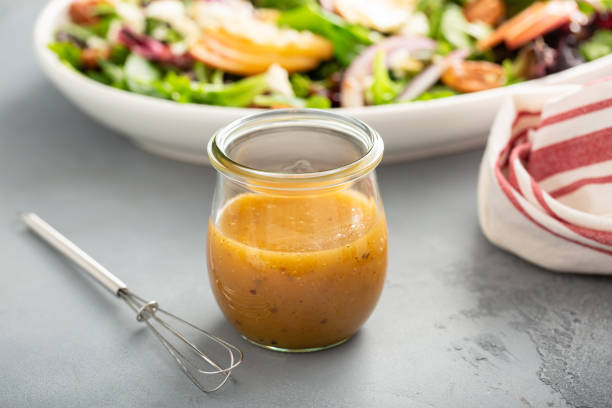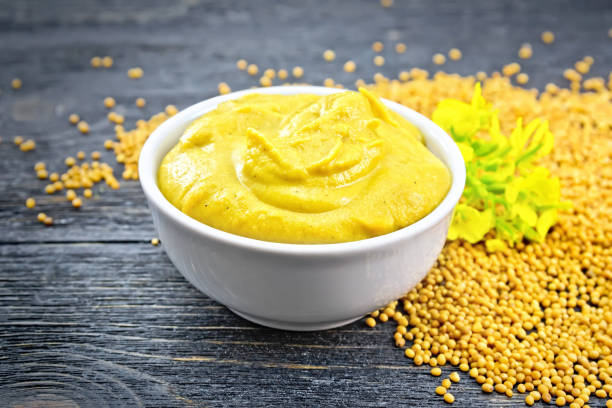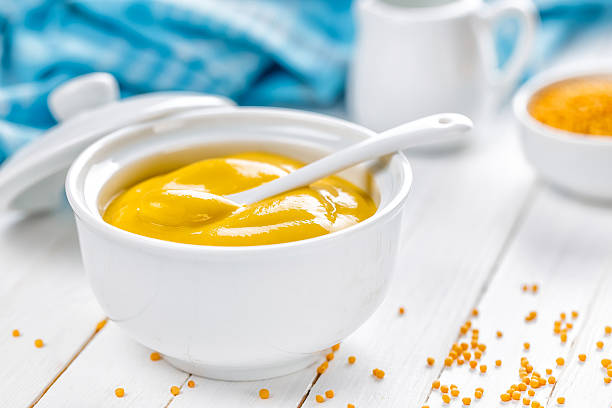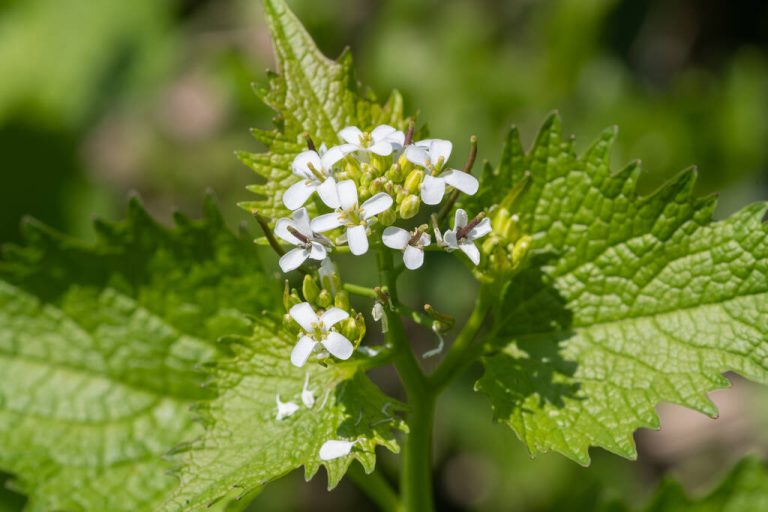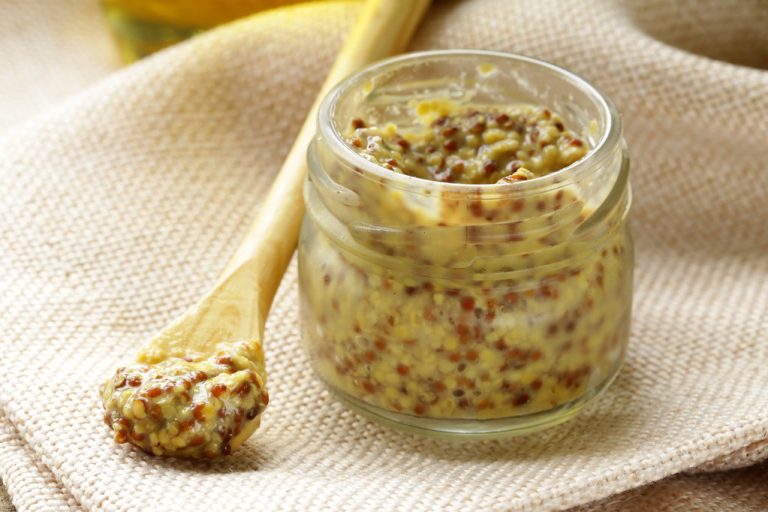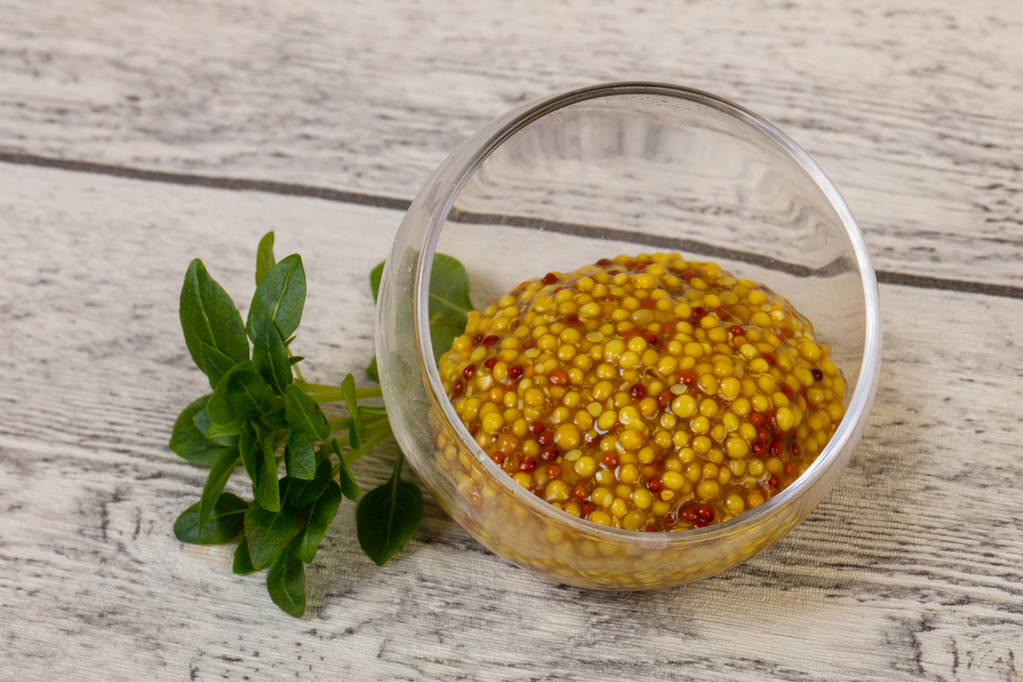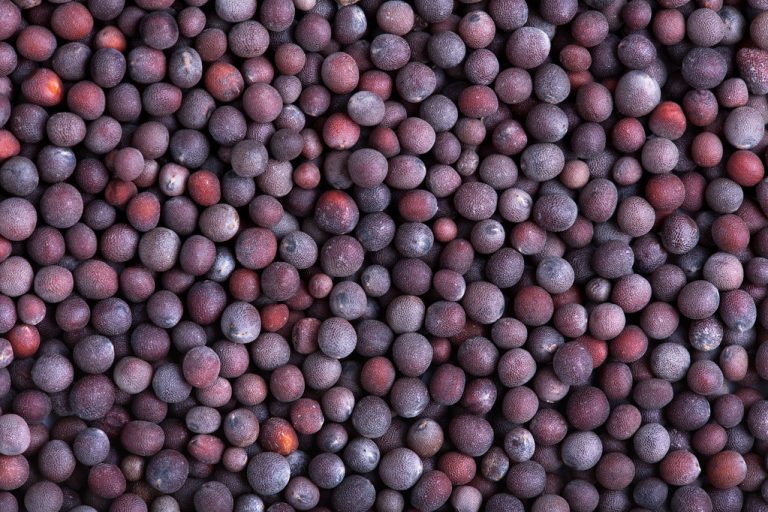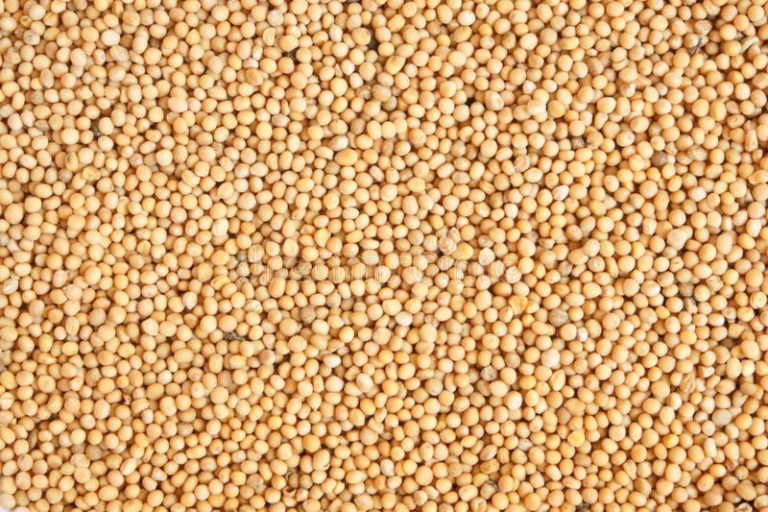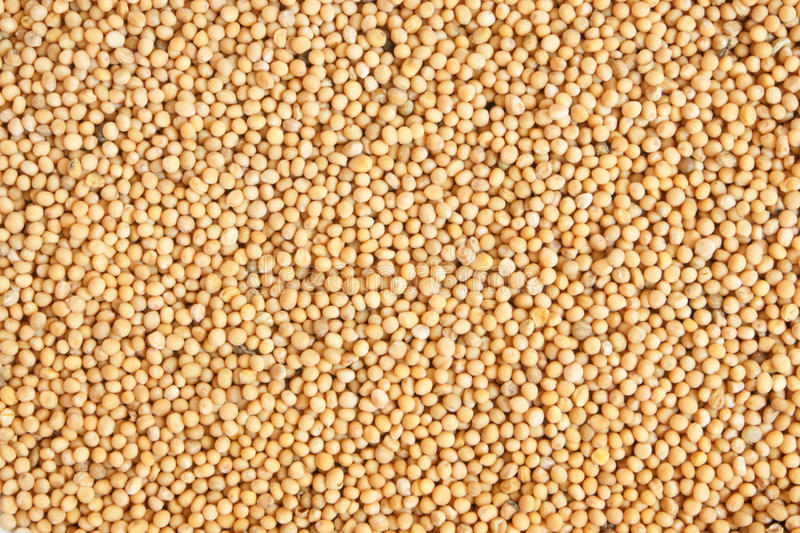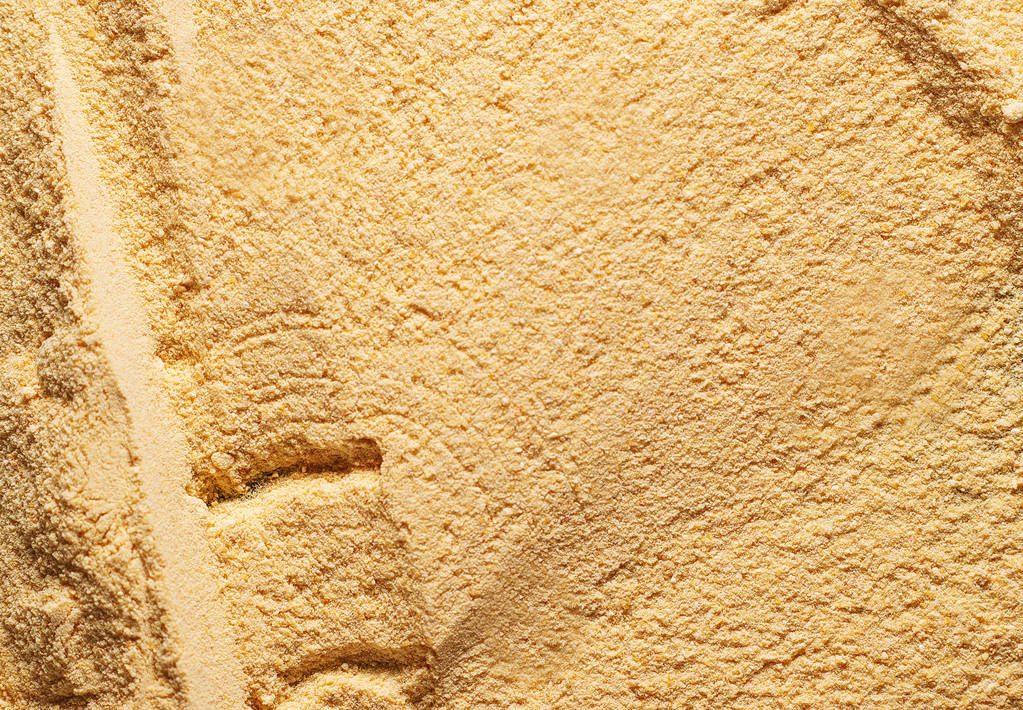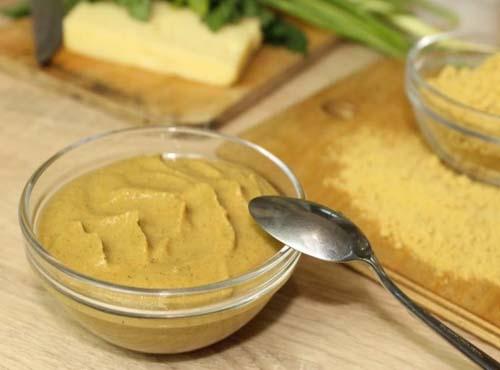The garlic mustard has a long tradition as a medicinal plant. Today the wild plant is mainly used as a herb. In this article, you will learn how to recognize and use garlic mustard.
The garlic mustard, Latin Alliaria petiolata, belongs to the cruciferous family and is related to mustard and the shepherd’s purse. Finds indicate that garlic mustard was used as a spice and medicinal plant 5000 years ago.
The rocket is a biennial plant that usually occurs wild. It is native and widespread throughout Europe. The garlic mustard grows mainly in nitrogenous soil and can be found in parks, deciduous forests, along roadsides and even in urban areas.
The plant is also called leek herb because of its special taste and reaches a height of 50 to 90 centimeters. The leaves are slightly reminiscent of those of the stinging nettle, but are much more jagged and not hairy.
The garlic mustard forms small white flowers from April to August. When they have finished flowering, pods that are about five centimeters long develop, in which the small black seeds are located.

Garlic mustard in your garden
The flowers of the garlic mustard are an important food source for insects, bees and caterpillars. Under the right conditions, you can plant the plant in your garden:
Location:
The garlic mustard prefers a place in the shade or partial shade.
The plant needs nitrogenous soil, as well as rich soil. It is best to mix them with fresh hummus.
You can also plant the garlic mustard on the balcony. A north-facing site is best for this.
Sowing:
You can release the seeds from March to April or in October. However, early March is best for sowing.
The garlic mustard belongs to the cold germs. The seeds need frost and low temperatures to germinate. You should definitely avoid sunny places.
It can take anywhere from 14 days to a month for the seeds to germinate. Since the seeds are difficult to germinate, you may need several attempts.
Care:
In the field, it is not necessary to additionally fertilize the plants. In the pot, you should treat the garlic mustard with nitrogenous, organic fertilizer about every six months.
Garlic mustard is sensitive to drought. You should water them on hot days.
Garlic herb is hardy. Therefore, no preparations for the winter are necessary.
Harvest:
You can harvest the leaves all year round, although the young leaves are more tender and taste better in spring.
You can easily recognize garlic mustard by its smell. If you rub a leaf between your fingers, you should notice a distinct smell of garlic
ingredients and effects
Since there is no commercial interest in the wild plant, it has hardly been scientifically studied. It is considered a healthy wild herb because it contains some valuable ingredients:
mustard oil glycosides
saponins
Vitamin A
vitamin C
essential oils
Originally, the garlic mustard was often used as a medicinal plant for various diseases. Today, however, it is rarely used as a medicinal plant. This is probably due to the fact that there are plants that are more suitable for the application areas. Mainly the garlic mustard had the following areas of application:
rheumatism
gout
colds
inflammation
wound healing
In traditional use in folk medicine, the following effects were attributed to garlic herb:
anti-inflammatory
blood purifying
diuretic
expectorant
However, the properties of the plant have not been scientifically proven.

How to use garlic mustard in the kitchen
The spicy kitchen herb is enjoying increasing popularity. It used to be very popular, especially among the poor, because spices were very expensive.
The taste is strongly reminiscent of garlic with a peppery note. The garlic mustard can be compared to wild garlic, but has a much milder taste. In addition, it leaves no unpleasant bad breath.
In order to preserve its aroma, you should only process the plant raw. Due to high temperatures, it loses its unique taste. If you want to use it to refine soups or sauces, you should only add the herb just before serving. You can use the garlic mustard in many ways in the kitchen and use all parts of the plant:
Root: Similar to horseradish, you can grate the root of the plant. It has a spicy taste and is well suited for sandwiches. However, you should only use the roots of the plant in the first year, as they become woody in the second year.
Leaves: Cut into small pieces, the leaves are perfect for herb butter and herb quark. The garlic mustard can also be processed into a wild herb pesto. The plant goes particularly well with walnuts.
Seeds: You can grind the fresh seeds into wild herb mustard in a mortar. When dried, the seeds can be used like pepper.
Flowers: The small, white flowers are suitable for decorating salads or other dishes.
You can freeze the herb to preserve the flavor. Garlic mustard loses its flavor as it dries.
